Three days ago I found the Spotted Sandpiper chicks again and they were closer than they were last time.
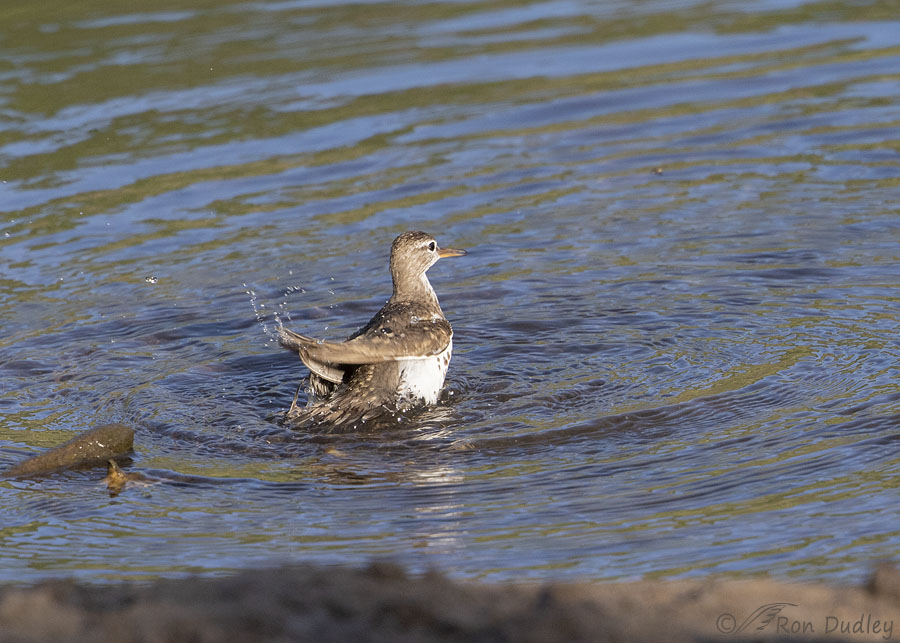
1/1600, f/6.3, ISO 800, Canon 7D Mark II, Canon EF 500mm f/4L IS II USM + EF 1.4 III Extender, not baited, set up or called in
But one of the adults, a parent of the chicks, wasn’t very close at all when it decided to bathe, with its back to me of course. Based on its relatively small ventral spots (and a behavioral trait I observed) I believe this was the male of the pair but I’m not sure of that. When he was through bathing he…
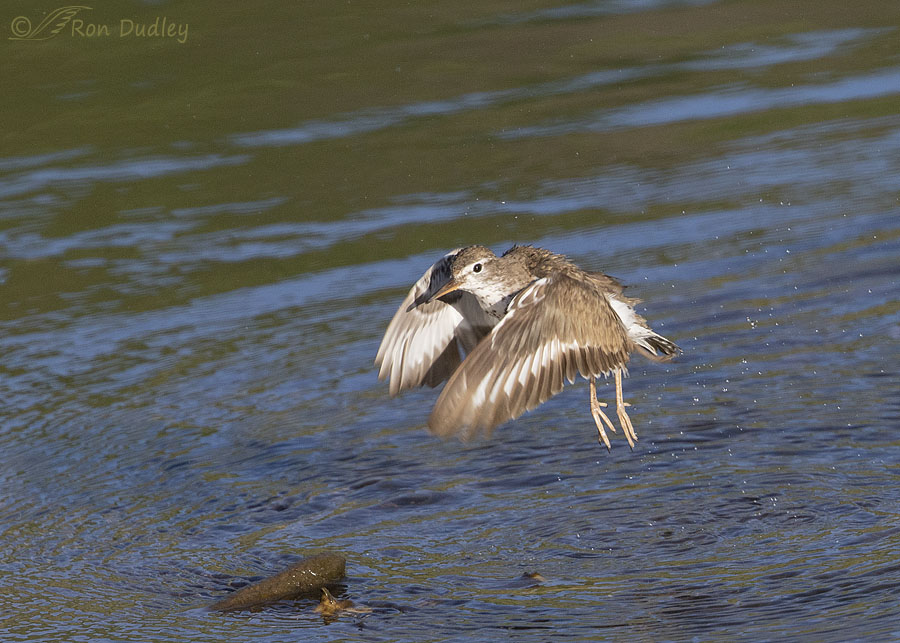
1/2500, f/6.3, ISO 800, Canon 7D Mark II, Canon EF 500mm f/4L IS II USM + EF 1.4 III Extender, not baited, set up or called in
flew a few feet to the nearby creek shore, rousing in flight to shake off the water for the entire short trip.
- Note to photographers: Notice the motion blur in the left wingtip. This is why I try to have shutter speeds faster than 1/2500 sec. for smaller birds in flight. Since the bird wasn’t close I should have been at f/5.6 which probably would have bumped up my SS.
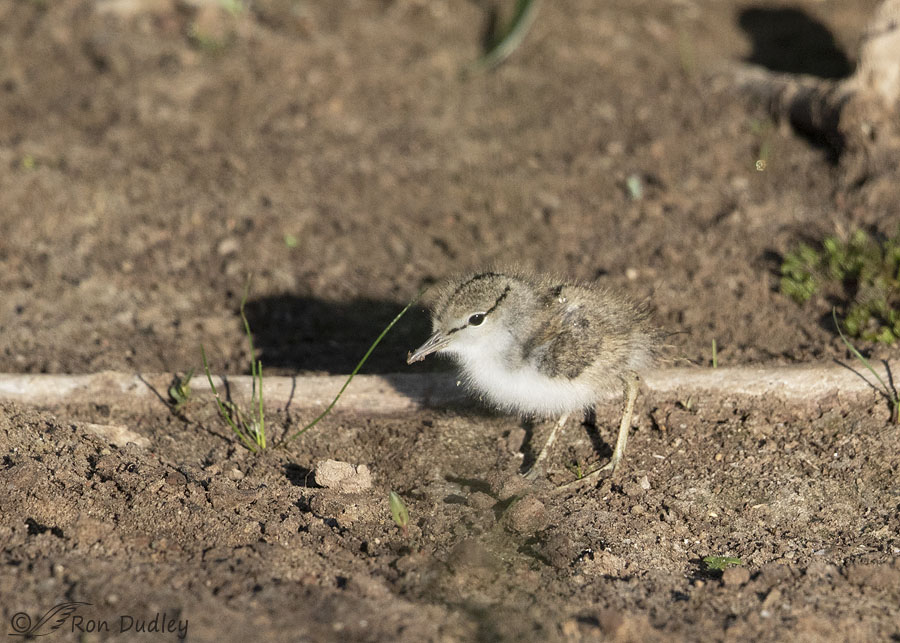
1/2500, f/6.3, ISO 800, Canon 7D Mark II, Canon EF 500mm f/4L IS II USM + EF 1.4 III Extender, not baited, set up or called in
Almost immediately after the presumed male landed I spotted two of his chicks moving in and out of some low-growth vegetation as they alternated between foraging for food and…
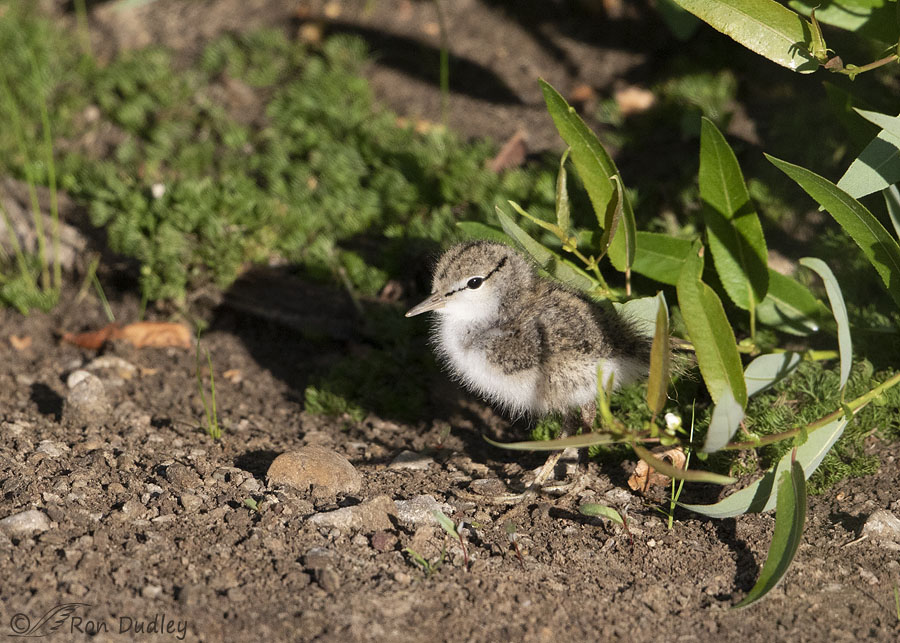
1/3200, f/6.3, ISO 800, Canon 7D Mark II, Canon EF 500mm f/4L IS II USM + EF 1.4 III Extender, not baited, set up or called in
ducking for cover. I was pleased that they were closer to me than they had been earlier in the week but that made my shooting angle on them fairly steep.
I’ll try to avoid using the word “cute” for the rest of this post but it won’t be easy.
1/3200, f/6.3, ISO 800, Canon 7D Mark II, Canon EF 500mm f/4L IS II USM + EF 1.4 III Extender, not baited, set up or called in
I even caught one of the chicks gobbling down a tiny green insect. This was the only time I could actually see what they were eating.
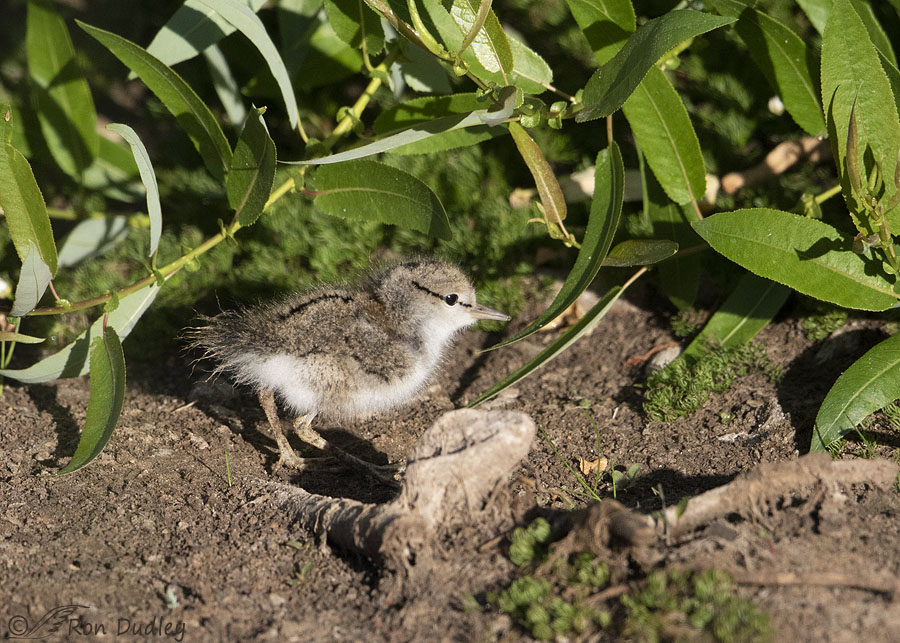
1/3200, f/6.3, ISO 800, Canon 7D Mark II, Canon EF 500mm f/4L IS II USM + EF 1.4 III Extender, not baited, set up or called in
But they never strayed far from the patch of vegetation beneath a tree (really a tall bush) that they used for cover whenever they needed or wanted to.
Not long after this photo was taken I heard one of the nearby parents frantically sounding an alarm call and both of the chicks immediately disappeared into the greenery beneath the tree. Then I saw a behavior from the agitated adult that I’d never seen before with this species.
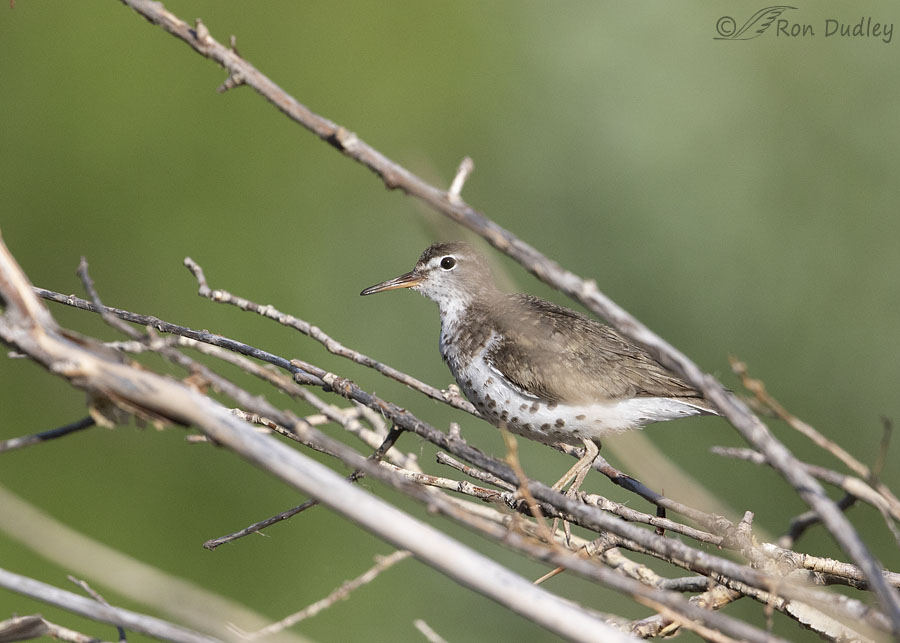
1/5000, f/6.3, ISO 800, Canon 7D Mark II, Canon EF 500mm f/4L IS II USM + EF 1.4 III Extender, not baited, set up or called in
It landed in some dead branches perhaps 15′ off the ground on top of the tree directly above where the chicks were hidden. In my experience with Spotted Sandpipers they’ve always been on the ground near water. I had never seen one perched in a tree (or on any elevated perch for that matter) so I did some research to find out how common it is. This is what I found in Cornell’s BNA Online:
- “Sometimes perches in trees or on poles, especially while on lookout with chicks.”
It all fits, doesn’t it. The adult landed on the elevated parch to have a better view of both its chicks below and whatever it was that it perceived as a threat to them.
And no, I never did see what that threat was but I’m sure it wasn’t me.
Ron


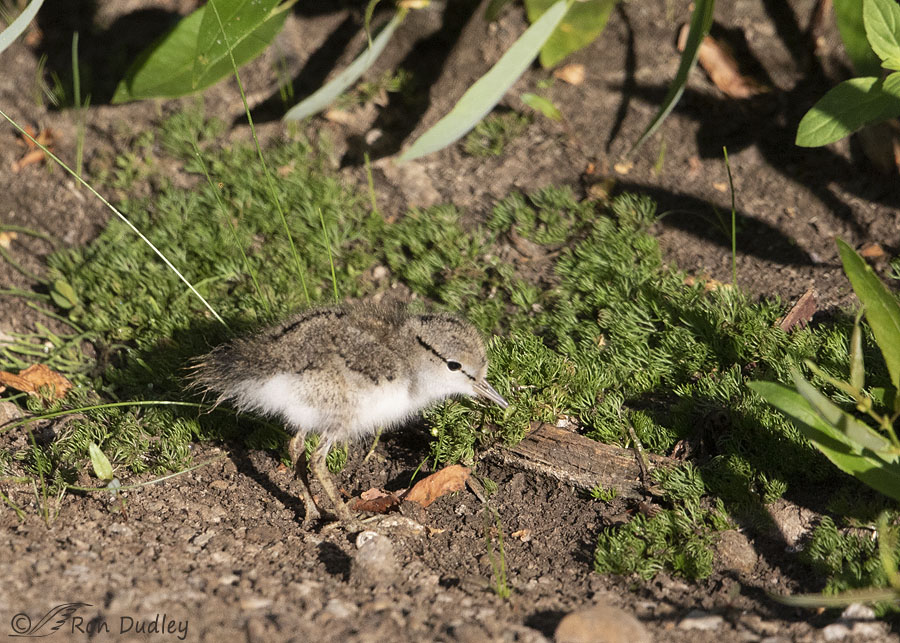
These chicks are beyond cute, voyaging into the cuteriferous territory. 😉 I especially like the water drops being flung off the wings in the first shot.
Was lucky enough to see a GBH flying low overhead on my way home from some errands today. Yep, it’s gonna be a great day!
Marty, be sure to check tomorrow’s post. Maybe it’ll bring you another good day.
A couple of the photos of the chicks remind me of the post where you pointed out the rictal bristles on the Gray Catbird. Only the bristles on the chicks are at the opposite end: rectal bristles, if you will (I can hear you say “yeah, real cute, Lyle).
Rectal bristles, I kind’a see what you mean, Lyle.
Fascinating.
And yes, that unusual behaviour makes complete sense (when it is explained to dullards like me).
The little fluff ball feeding itself was a total charmer.
Megathanks. As always.
You’re far from a dullard, EC. Thank you.
I love that thin black line through the baby’s eye.
Pretty distinctive, isn’t it Sallie.
Ron, very interesting post. Not sure that there is a word to replace “cute” so I won’t try. Thanks.
There probably isn’t a fitting replacement, Alice. If there was I’d have found it by now. Believe me, I’ve looked.
Wonderful series. I have seen this behavior a couple of times before.The first time, I guess I was the object of danger. I was walking along the lake shore completely unaware that Spotted Sandpipers were so close. Suddenly, I heard the loud alarm call and an adult hopped up on a dead horizontal branch just 4-5 feet away. Then I saw two chicks running behind the branch. We quickly backed away and the adult hopped down and casually led the youngsters along the shoreline. Throughout the whole show that rear end never stopped bobbing up and down.
Thanks for the (implied at least) confirmation that the behavior is unusual, Dan.
And by the way, I visited that “tree” again this morning and I overestimated how far above the ground the adult was perched. It’s only about 10′ but that doesn’t change anything in my book – it was still an elevated perch and the behavior was unusual.
What a wonderful series Ron! Thanks for sharing!
Charlotte
Thank you, Charlotte.
Great shots, young are always cute!! Its all about survival and how parents do what they must to insure young survive. Very nice set.
Thank you, Dick.
Wonderful photos and information this morning! 🙂 In a tree or brush is the LAST place I’d expect to see the parent tho it is logical to see where the chicks/predator are but it does make sense plus might be a distraction for the predator. Obviously an efficient hunter at such a tender age…. 🙂 VERY different from the swallow young I’m watching sitting on the power lines screaming for grub and/or taking off to collect the meal mid-flight……. 😉
Very good point about the potential “distraction for predators”, Judy. Wish I’d thought of it.
All that fuzziness! Precious! Interesting how the chicks have the black eye line that fades with adulthood. I guess it crosses all spectrums…as a parent you do what you have too for the sake of the little-ones. Very interesting post.
Thanks, Kathy. I suspect that black line breaks up the perceived shape of the eye and makes it more difficult for predators to spot them.
Very interesting about the adult perched on the branches and the fact that it has to do with looking out for the chicks. I also have never seen one doing so. Neat photos – especially like the adult in flight and the chick with the insect. Using cute over and over is almost unavoidable, but we can use some synonyms such as pretty, endearing, adorable, lovable, sweet, delightful, and winsome.:)
Thanks for the list, Everett. Yes, I considered using adorable…
Interesting that you’ve also never seen them perched in trees. I actually wondered if it was just because my observational skills leave something to be desired.
Thanks for your commentary Ron
The chick with the insect made me smile.
Thank you, Diana. Smiles are good, especially this time of morning.